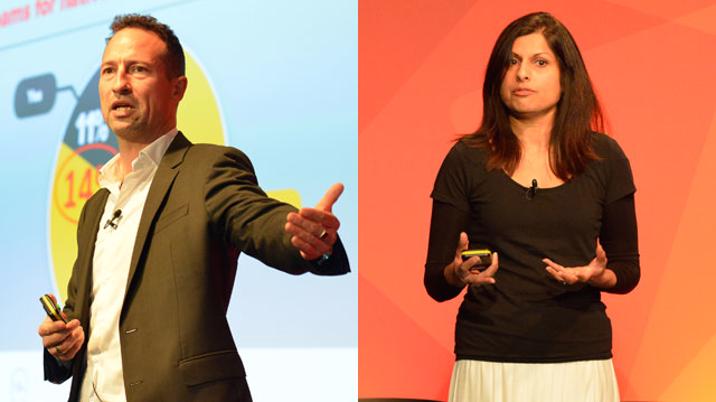
Jesper’s research project, Native Advertising Trends 2017, run in conjunction with FIPP, looked at publisher attitudes to native advertising. Native is clearly growing! 81% of publishers expect native advertising sales to increase next year. In 2016, native formed 21% of total ad revenue; by 2020, it’s expected to account for 40%.
In terms of content creation, 65% use their own editorial teams (“they’re the best people to write it”, said one respondent) and 30% have set up a dedicated studio.
Increasingly, publishers are creating content to feature specifically on third party sites and social media platforms, and not necessarily having any presence on their own sites at all. This agency approach to content marketing was, said Jesper, a “massive opportunity” for publishers as they are uniquely well placed to create compelling content for clients.
‘Print’ is accounting for a decreasing proportion of native revenues and, probably in line with general publishing trends, native is becoming an increasingly digital output. ‘Online articles’ was found to be the most effective type of native advertising, followed by ‘video content’, then ‘printed articles’ and then ‘promoted posts on Facebook’, with a host of other activities bringing up the rear.
Use of influencer networks and physical events are also on the increase.
On the ever-contentious issue of labelling, the research found that 56% were labelling it ‘sponsored content’, 21% were labelling it ‘advertisement’ and, alarmingly, 10% were not labelling it all. Putting aside the fact that such practice is illegal, said Jesper, it’s also completely counter-productive: it weakens trust (perhaps irrevocably) and makes it harder to develop effective native strategies. It’s also, he said, simply not necessary. “People will watch good native advertising; labelling will not put them off.”
Definitions and labelling are very important at Time Inc UK. Carla Faria described a “spectrum of content”, with ‘pure editorial’ at one end and ‘advertorial’ at the other. At the sweet spot in the middle, sat ‘native’. Whilst some publishers are a bit footloose with their definitions, Time Inc is very precise. ‘Advertorial’ describes content where the client retains control, whereas in ‘native’ content, although it’s still paid-for, the publisher retains ultimate control.
Four golden rules
For Carla, trust was the foundation stone of successful native advertising. ‘Trust’ was a word we heard a lot at the Congress. Like any word that is overused, it runs the risk of becoming hackneyed. What exactly is ‘trust’? Carla thought it was helpful to break ‘trust’ down into four component parts and to see each in terms of desired reader reaction: affinity (“they’re a lot like me”), ability (“they know what they’re doing”), integrity (“they’re true to their word”) and benevolence (“they care about me”). If your brand and content can provoke these reactions in readers, then you’re on the right tracks!
For her, the old ‘church’ and ‘state’ boundaries were no longer valid – everything was coming together and the reason why this was not a problem was the rigorous application of best practice and proper labelling.
Carla has four golden rules that underpin her team’s approach to native. Every piece of native content should: 1. Be authentic: the host brand voice has to ring out. It must preserve the brand’s integrity, house style and affinity with its readers. “Let some fallibility show through,” Carla suggested and “don’t be tempted to tweak the piece” under pressure from commercial clients, who might want a particular form of words or editorial angle. Within reason, this pressure should be resisted so as to preserve your brand voice. 2. Be opinionated… though not polarising: It should read like editorial and should invite the reader in. 3. Be purposeful. The piece should be clear in what it’s trying to achieve, whether that be to educate, entertain, inspire or all three. 4. Be transparent: it must be labelled properly. Publishers have everything to gain by being honest, and she, for one, was astonished by Jesper’s 10% bombshell.
“Respect is everything”, Carla said, and publishers need to be prepared to walk away from potential sponsored content deals, if there is an absence of trust with the prospective client.
Native advertising is increasingly seen as part of the content experience. According to Jesper’s research, 83% of publishers felt that native added value to their readers and viewers. It’s all about getting the voice right, labelling it properly and being true to your own brand values.










